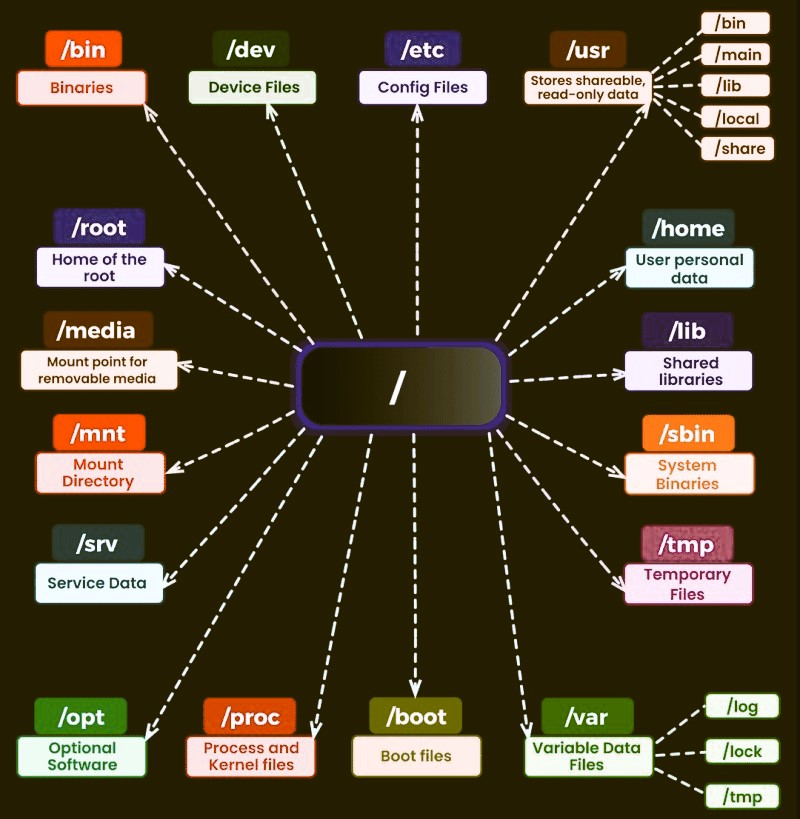
Introduction
In the vast realm of Linux, understanding the directory structure is to comprehending the blueprint of a city. Just as every building has its specific purpose, every directory in Linux serves a distinct role. In this blog, we’ll dive into the intricacies of the Linux directory structure, shedding light on its organization and significance.
Table of Contents:
Root Directory (/): The Foundation of Linux
Definition and purpose
Key subdirectories: /bin, /etc, /usr, /var
Navigating User Space: /home and /usr
The /home directory: User profiles and personal data
The /usr directory: User-related programs and resources
System Configuration: /etc and /opt
The /etc directory: Configuration files and system settings
The /opt directory: Optional software and third-party packages
System Commands and Binaries: /bin and /sbin
The /bin directory: Essential system binaries
The /sbin directory: System administration binaries
Variable Data: /var and /tmp
The /var directory: Variable files (logs, databases, spool)
The /tmp directory: Temporary files
Device Files and Mount Points: /dev and /mnt
The /dev directory: Device files for hardware and peripherals
The /mnt directory: Mount points for external storage
Kernel and Boot Files: /boot and /lib
The /boot directory: Bootloader files and kernel images
The /lib directory: Shared library files for system programs
System Administration: /root and /srv
The /root directory: Root user’s home directory
The /srv directory: Data for services provided by the system
Lost and Found: /lost+found
The /lost+found directory: Recovery directory for orphaned files
Managing User Programs: /bin vs /usr/bin
Difference between /bin and /usr/bin
/bin contains executable files that are part of the core operating system
/usr/bin contains executable files that are not part of the core operating system
Conclusion
The Linux directory structure forms the backbone of the operating system, guiding the flow of data and enabling seamless interactions between hardware and software. Each directory serves a specific purpose, contributing to the overall stability and functionality of the system.
By grasping the significance of directories like /home, /etc, /bin, and /var, users can gain a deeper understanding of Linux’s inner workings and optimize their workflows. Whether you’re a Linux enthusiast or a newcomer, delving into the directory structure unlocks a world of knowledge and possibilities, empowering you to harness the true potential of this remarkable operating system.



